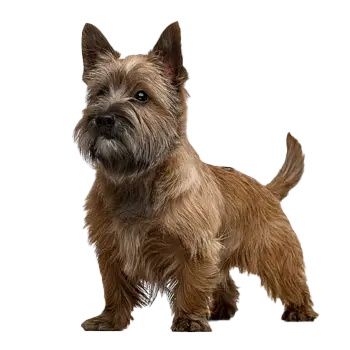The Short Haired Skye represents one of the historical names for the breed now universally recognized as the Cairn Terrier, reflecting the complex development of Scottish terrier breeds during the nineteenth and early twentieth centuries. Before formal breed separation occurred, terriers from the Scottish Highlands and Isle of Skye were often categorized based on coat type rather than distinct breed identity, leading to designations like Short-haired Skye Terrier or Prick-eared Skye Terrier that distinguished them from the longer-coated Skye Terrier breed.
The transition from Short Haired Skye to Cairn Terrier occurred through a contentious naming process that shaped how we identify this breed today. When these hardy little terriers first appeared at official shows in the United Kingdom in 1909, they were exhibited under the name Short-haired Skye Terriers. This designation promptly generated protest from established Skye Terrier fanciers who objected to the implied connection between their breed and these rough-coated hunting terriers. The Kennel Club required a different name, and Cairn Terrier was proposed as a compromise reference to the breed's traditional work routing vermin from cairns, the rock piles marking Scottish farm boundaries and graves.
In its native Scotland, the breed has been known by various regional appellations reflecting local dialects and traditions. References to short-coated working terriers from the Highlands appear in documents spanning several centuries, though these dogs were not distinguished as a separate breed from other Scottish terrier types until the formal recognition process began. The breeds we now know as Cairn Terrier, Scottish Terrier, and West Highland White Terrier share common ancestry and were often found in the same litters, distinguished primarily by color and coat characteristics.
Captain Martin MacLeod of Drynoch maintained one of the oldest documented strains of what would become the Cairn Terrier, keeping his pack of silver grey Short-haired Skye Terriers for forty years before emigrating to Canada in 1845. This Drynoch strain continued through Mr. John Macdonald of Bridge of Ose Kennels, who maintained the bloodline for seven decades while serving as gamekeeper to the Clan Chief MacLeod. These early breeding programs established type that persists in the modern breed.
Today, the name Cairn Terrier enjoys universal recognition across major kennel clubs worldwide, while Short Haired Skye persists primarily as a historical reference or informal designation among breed enthusiasts familiar with the breed's nomenclature evolution. Some older references and historical documents continue using the earlier name, providing context for understanding the breed's development during the critical period when Scottish terrier types were being formally distinguished and registered as separate breeds.

